 Flávia Linden
Flávia Linden Cassy Bhairo
Cassy Bhairo Anna Le
Anna Le Mirka Germanova
Mirka Germanova Guiri Uribe
Guiri Uribe
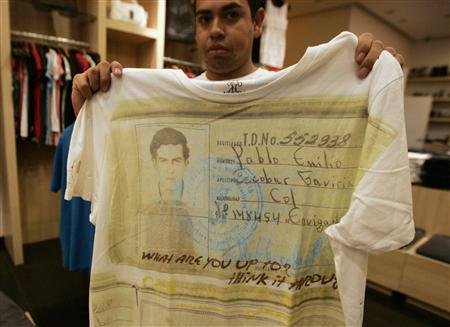
MEXICO CITY (Reuters) - Nearly two decades after Colombian cocaine kingpin Pablo Escobar died in a hail of bullets, his eldest son is conquering new markets in Mexico - with a fashion line in his father's image.
Sebastian Marroquin's designer T-shirts, plastered with photos of Escobar, are hot sellers in Mexican states that are on the front lines of the country's deadly drug war.
The shirts are emblazoned with images of the Medellin cartel boss, who flooded the world with cocaine before he was shot dead in 1993. Featuring pictures from Escobar's student ID card, driver's license and other images, the shirts cost between $65 and $95 - a small fortune in a country where about half of the population lives in poverty.
"We're not trying to make an apology for drug trafficking, to glamorize it in the way that the media does," insists Marroquin, 39, who was born Juan Pablo Escobar Henao, but changed his name to avoid reprisals after his father's death.
In a bid to head off criticism that the line glorifies drug crime, the shirts carry messages to provoke reflection. One bearing Escobar's student card reads: "What's your future looking like?" while a design emblazoned with his driver's license warns: "Nice pace, but wrong way."
The cotton shirts, which went on sale last year in Mexico, are selling well in stores in Culiacan, the capital of western Sinaloa state, which is home of Mexico's most wanted trafficker, Sinaloa cartel chief Joaquin "Shorty" Guzman.
The clothing is also on sale in Guadalajara in western Jalisco state, long a refuge for drug traffickers, which has been swept up in Mexico's raging drug violence. About 60,000 lives have been lost in the last six years.
Analysts warn that the increasingly popular 'Escobar Henao' clothing line simply reinforces an already widespread fascination with the symbols of cartel culture such as marijuana leaves and AK-47s among youngsters in Mexico.
"I see it as a strong symbolic product," said Vicente Sanchez, a researcher at Mexico's Colegio de la Frontera Norte. "The state ... has to have a better grasp of things directed at young people, as that's the way that these anti-values gain ground," he added.
But Marroquin, who has stores in Austria, Guatemala and the United States as well as Mexico, dismisses criticism, pointing to others who cashed in on his legacy. There are plenty of books on Escobar's exploits and even a Colombian television soap opera, "Pablo Escobar: The Boss of Evil" that aired this year.
"Those who set out to criticize me are the same who have profited from the story, life and name of Pablo Escobar," Marroquin told Reuters in an interview on Skype.
The 39-year-old has said he held off opening stores in Colombia out of respect for drug trafficking victims there.
Despite the success of the clothing line in Mexico and other markets, Marroquin insists that there has been an enduring downside to his father's legacy that has followed the family in the 19 years since his death.
"In 1994, we left Colombia ... but because of our surname, we couldn't get a passport anywhere in the world ... for the crime of having Escobar DNA," says Marroquin, who lives in Argentina. "We have lived liked criminals without being them."
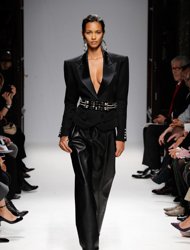
So many people have claimed to be, or have been given the mantle of being, the new Versace that it's an almost redundant phrase. But if any brand is where the house of Versace ought to be today then it is Balmain.
Not only because both Gianni Versace and Balmain's designer, Olivier Rousteing, rely on the same key elements to create their bravura collections - emotion and slick technique, married to a genuine love of women and their ability to truly dazzle.
Rousteing's latest runway display, a spring 2013 collection shown in Paris on Thursday, Sept. 27, was a bravura performance, where he blended elements of New Wave, haute glam and Latin rococo grandeur.
Medieval lady knights marched up and down the catwalk, clad in spun gold armor; two-tone gentile rockstars simmered in black and white redingotes; femme fatales emoted in micro check harlequin jumpsuits.
The sheer technical audacity was pretty awesome - from finely spun jacquard guipure tunics that looked like malleable stucco to a divine screen goddess Prussian blue mini cocktail exploding with crystals. Balmain's designer is also a great cutter - his hyper wide shouldered, square gorged jackets and forgiving, nipped at the ankle pants were flawless.
Another thing Rousteing and the late, great Versace share in common: models love to wear their clothes. The catwalk's latest new comer star, pouty-lipped blond Danish beauty Nadia Bender, all done up in crystals and shiny shoulders, jumped up and down for joy backstage as she "posed" with Rousteing for photos.
"Cuban Latin power, Sade and '90s inspiration. Steven Meisel and Peter Lindberg's shoots, the power years of the '90s, when Linda Evangelista was fighting with her husband in the street in shoots. Powerful women," said Rousteing, referring to the very glory years of Versace.
Rousteing within just two seasons is already in a league of his own and has taken over Christophe Decarnin's successful ground work to make this a must-see show in Paris. If only the Grand Hotel space would feel a bit more glamourous. Next time make it the Ritz Pool.
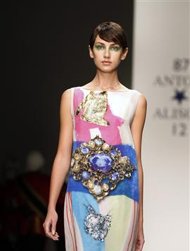
LONDON (Reuters) - Designers turned to nature for inspiration on the opening day of London Fashion Week on Friday, showcasing a collection of sheer silk dresses, delicate embroidery and elegant show pieces all featuring a floral-inspired theme.
Britain's capital took over the baton from New York, which wrapped up its week with sparkly dresses and bold geometric prints, with a pared-down color palette of fresh pastels and faded dip-dyes.
Designers Antoni & Alison opened the day with a series of quirky silk printed dresses, followed by Fyodor Golan, whose show was in the grandiose lounge of the Waldorf Hilton and inspired by Mayan and Aztec cultures.
Models floated down the steps in shift dresses, loose kaftans and bold show pieces varying in electric blue, canary yellow, autumnal amber, and bright pink hues, with intricate beading embroidery and tribal-inspired prints and cutouts.
"We wanted to show lightness and spirituality and at the same time to have that sexuality there. So it's that contrast but it's not in your face, it's still strong and gives you power but it's very emotional, something that will engage you," Designer Fyodor Podgorny told Reuters after the show.
Podgorny along with his partner Golan Frydman has consistently impressed critics since their debut collection two years ago.
The duo kept their look neutral, with slicked back ponytails and bare faces on models offset by delicate painted tribal tattoos and intricate facial jewellery covering eyes and noses.
Veteran fashion journalist Hilary Alexander said she was impressed by the attention to detail and vibrant colors.
"It's not for everybody, a woman who's a minimalist would probably throw up her hands in horror but I happen to love them," Alexander said.
Designer Corrie Nielsen told Reuters that her collection, entitled Florilegium, was inspired by the Royal Botanic gardens in London and Japanese artist Makoto Murayama.
"Everything has been cut three-dimensionally and shaped, inspired from the flower," Nielsen said.
The collection also featured sleek tailored pieces alongside dip-dyed silk blouses and origami-folded jackets in pale yellows, pinks and creams.
Sheer dresses embellished with embroidered appliqué details in icy blues, mint greens and lilacs were seen at Bora Aksu.
Models were adorned with cut-out felt crowns, sporting braids and back-combed hair, wearing light printed and embroidered gowns inspired by art deco and botanical gardens.
"I just wanted to create something that was really light," Aksu said.
"There's texture on it but it's very light, there's prints and embroideries and stuff but it's almost like a light layer, so nothing is really heavy. I wanted to make it like air."
Romantic florals and pastels defined the opening day of London Fashion Week, but Felder Felder added an edgy twist to their spring collection, teaming bold hues and muted leopard prints with floaty fabrics and shortening hemlines of shredded knitwear dresses.
Singer Kate Nash, dressed in a black suede dress and leather jacket, serenaded the crowd as models accessorized with aviator sunglasses and beach hair strutted down the runway in miniscule shorts, dresses with high slits and suits paired with midriff-baring tops.
Models swanned through the intimate presentation room in feminine tailored dresses made from light fabrics with prints and woven textures, in an array of pastel hues, at Emilia Wickstead's presentation.
The designer said her new collection a twist on Truman Capote's 'swans' and inspired high society dames from the late 1950s who were required to look chic and elegant at social events.
"I wanted it to be uplifting, fashion forward and really play on my inspirations a lot," Wickstead told Reuters.
"I loved the matador shorts so I played a lot on that, I thought that was quite fresh, keeping summer fun and flirty but at the end of the day, my style is quite sophisticated and neat, so I wanted to make it more playful."
Wickstead, who is six months pregnant, was one of the designers to benefit from the "Kate effect" after the Duchess of Cambridge stepped out in some of her designs.
Wickstead told Reuters she wasn't able to comment on her royal client, but did say it was "inspiring" to dress "anyone who is sophisticated and high profile and of a lovely nature and a great look."
Middleton isn't the only high-profile client to favor Wickstead's chic designs. "Downton Abbey" actress Laura Carmichael, who wore a dress by Wickstead at New York's prestigious Met Ball Gala earlier this year, praised the designer's latest collection.
"She's got such a talent for doing completely classic, simple things and managing to be very dramatic and sexy with it in the most classy way," Carmichael said.
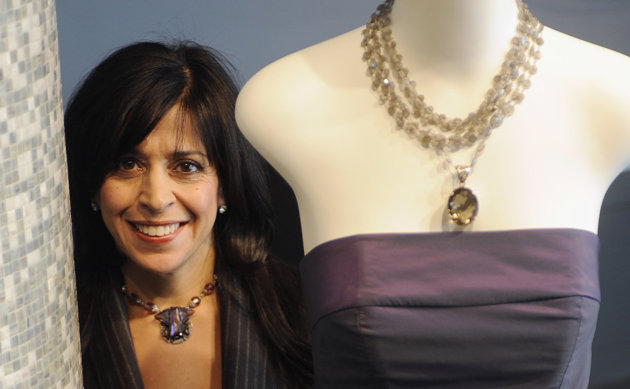
CHICAGO (AP) — Designer Maria Pinto, well-known for dressing first lady Michelle Obama and Oprah Winfrey, used her eye for fashion to curate antiquities from the Field Museum of Natural History in Chicago for a new exhibit that includes a century-old shredded bark Brazilian ceremonial costume and a woven monkey fur necklace.
The materials are a stretch from the rich, bright purple silk Pinto used to design the sheath Obama wore during the 2008 Democratic National Convention. "Fashion and The Field Museum Collection: Maria Pinto" opened Friday and includes an Inuit raincoat made of seal intestines. It was the first item that caught Pinto's attention, she said.
"I could totally see anyone wearing it," Pinto said. "What I loved about these creations was they had limited resources. They needed a raincoat and they realized they could use seal intestines. How creative is that?"
Pinto walked through the vast storage areas under the museum and chose items that appealed to her. Pinto and co-curator Alaka Wali chose 25 garments and adornments to pair with seven pieces from Pinto's collections. The museum items are juxtaposed with Pinto's designs.
"Part of the point is you can't tell if she designed them or someone in the Andes Amazon designed them," said Janet Hong, an exhibition project manager at the museum.
Another highlight is a full outfit designed by Pinto, who closed her Chicago boutique more than two years ago because of the poor economic climate. The outfit includes a structured blue wool coat, red fur collar and skinny pants. It was inspired by a Chinese theatrical headdress.
Pinto found herself particularly drawn to weapons, tools and armor in the museum collection. She matched metal elbow-length samurai gauntlets with a wool green suit for the office, saying the suit is modern-day armor for women.
"The whole idea of armor plays into a lot of how I envision what we wear every day," Pinto said.
Other Pinto designs in the exhibit include a sequined chiffon shoulderless cocktail dress from her 2008 fall collection and a knee-length black silk taffeta, bias-cut cocktail dress from her 2010 spring collection.
The exhibition has a trendier feel than many other exhibits at the museum known for dinosaurs and mummies. A large video is projected on one wall showing images from the exhibit accompanied by techno music that might be heard on runways in New York.
"I wanted it to be something more contemporary," Pinto said. "Make the music have an influence over the experience to the degree of making it more of an art gallery."
The exhibit runs through June 16.
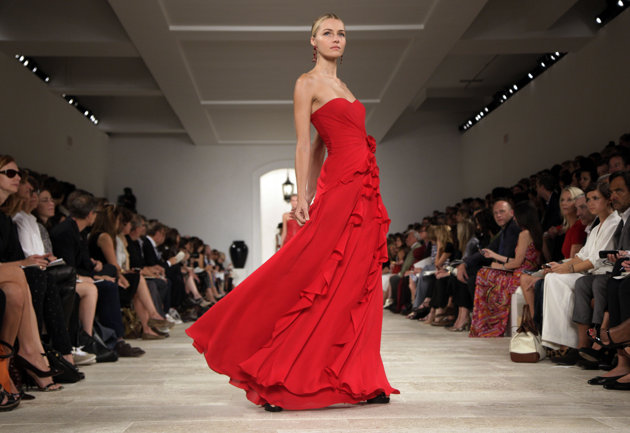
NEW YORK (AP) — The designers previewing spring collections at New York Fashion Week may not have had a single voice, but they all spoke loudly.
"Bold" was the word that buzzed around the tents at Lincoln Center after eight days of previews came to an end on Thursday. Between saturated color, sexy cutouts, statement-making stripes and mixed-up prints, the clothes had something to say.
"It feels like a statement season," said Brandon Holley, editor-in-chief of Lucky magazine. "It feels like everyone is tired of shopping their closet, and they're ready to make a new statement."
Retailers are happy to see newness and bright colors, said Ken Downing, fashion director for Neiman Marcus.
"There were some have-to-have things," said Downing, who ticked off a sleeveless jacket, a full skirt that's either swingy and short, or cut on the bias and falling below the knee, and colored leather — maybe laser cut? — as items that will be on the top of the list for shoppers.
Nearly 200 designers preview their spring collections in New York before the fashion crowd heads to London, Milan and Paris. In seasons past, it was as if they all agreed on a message ahead of time. After the recession started, a hard-edged chick was the obvious muse. A few seasons later, everything was bohemian.
This time, there were certainly clear trends — among them skirt suits, big colors, below-the-knee coats, leather, cutouts, corsets and banding, stripes and black-and-white. But there were many muses instead of one It Girl.
There were hints of India and other exotic locales. And the prints were edgier than what are usually offered in spring — instead of "pretty" florals, there were digital renderings, X-ray patterns, skulls. "If it is a floral, then it's photo realism floral, and that seems very different," Holley said.
Even uptown staples Carolina Herrera and Oscar de la Renta had an edge, with the latter adding leather and latex to his society girl.
It's as through designers stopped dictating style and are instead providing options. There's your breath of spring air.
RALPH LAUREN
Statement made, Ralph Lauren: Be strong. Be bold. Go on that adventure.
The first look on Ralph Lauren's runway featured a turquoise suede poet top, with cascading ruffles down the front, and the model wore a beret and carried a studded motorcycle bag. From there, it was a bright red hand-crocheted tank dress and a few looks later was a tomato red suede jacket with rustic brown leather details.
A colorful blanket-style serape was getting buzz from editors and stylists before they even left the downtown show space where Olivia Wilde and Jessica Alba sat in the front row. Lauren offered the same idea — in the same green, brown and yellow colors — in an off-the-shoulder serape wrap top that probably more easily fits into the closets of most customers.
There were beaded bolero jackets and embellished jodhpur pants that evoked a matador to the Spanish-style music, with flat-top hats and colorful scarves around some models' necks. But taking each piece on its own, it wasn't a costume.
CALVIN KLEIN
Francisco Costa, women's creative director at Calvin Klein, got to have final say Thursday at New York Fashion Week as one of the last major designers to preview a spring collection, but he left a purposeful impression of things left undone.
It's what left the crowd wanting more. Edges were left frayed, contrasting linings were revealed, and necklines were bare and exposed, all giving the impression that one was seeing more than they should. A gold hardware frame peeked atop the black sheer-panel dress that closed the show.
Costa has a knack for the "seductive lines," he mentioned in his notes. He certainly drew eyes to the bust and bodice, offering a series of conical bustiers, which were exactly what they sound like. On their own, they were futuristic but also a little harsh; under a sheer silk corset or a mesh silk crepe coat, they were sexy and edgy.
Calvin Klein continued the many layers of fabrics and textures that have dominated the runways: an abstract lace dress goes over a lacquered satin bustier and a bonded mesh skirt, for example. But the fact that almost every outfit featured black here can't be called part of that trend — it's a way of life for this design house.
MARCHESA
It wasn't just like Grand Central at Marchesa's New York Fashion Week show on Wednesday — which drew Kim Kardashian, Kanye West, Tyra Banks and all the photographers who trail them. It was in Grand Central.
The preview of the spring collection was staged at the historic train terminal, but it was hardly rush hour on the runway. The looks turned out by designers Georgina Chapman and Keren Craig were typically embellished and intricate, and required time to study the details. Models also can't walk all that quickly in the gowns that are jingling with beads or have slim hemlines.
Thanks to the Indian inspiration — via the Beatles' 1960s experience with the Maharishi — there were more colorful hues and easier-to-wear silhouettes than in recent Marchesa collections.
"Last season was Baroque and darker, and the season before that was very ornate," Chapman said in a preshow interview. "It's a different mood this season."
What fashion insiders are really looking for from Marchesa is a clue of what will soon come on Hollywood red carpets. After this, it's safe to say the stars may be wearing some high-neck gowns, either covered in tassel fringe or metallic beads — or both — and maybe a peacock-blue, one-shouldered tulle gown worn over a fully embroidered gold-leaf illusion bodysuit that gave the appearance of glittering body art.
PROENZA SCHOULER
The real-people-in-the-pool print on Proenza Schouler's catwalk Wednesday night probably took some fashion insiders — who don't expect that much newness during these previews — by surprise.
The collection by Lazaro Hernandez and Jack McCollough started off by advancing some trends seen for spring, including leather, patchwork, some perforated and mesh textures. The leather was a little shinier, the patchwork a little more random and the textures a little more exaggerated, but, still, they fell in line.
The duo also offered skirt suits galore, but they weren't trim and tailored; jackets were collarless and covered in snakeskin, and the skirts were slung low on the hips.
But the digital-print satin dresses decorated with neon nailheads on the tops and grommets on the bottom that served as the finale were only as Proenza Schouler can do, and showed why they are considered one of New York's bellwethers for fashion's future. The styles were a little out there, but it's where so many others will be.
REED KRAKOFF
Reed Krakoff's designs have always been luxurious and sporty. For spring, he decided to go for sexy, too.
Krakoff was heavy on sheer layers, over everything from tanks to leather bra tops to dresses. Even the feet received the sheer treatment: Krakoff's booties, worn by many models and also by actress Julianne Moore, were made of mesh (models wore "peep-toed" versions, while Mooore's were closed-toed and black.)
There were "stocking jersey" coats, polo shirts, boxer shorts, track jackets and sweatshirts (none of it was suitable for the gym, mind you — this was very high-end active wear.)
And leather, for which Krakoff is famous, provided a textural counterpoint to all the filminess: A sheer stocking-lace tank was paired with a bonded leather skirt; a stocking jersey track jacket with a sleek rubberized alligator skirt. A stocking jersey slip dress was accompanied by a black python tote.
J. MENDEL
You don't need frills when you have fur, and J. Mendel always has fur. This preview was for spring, so no need for big, cozy coats, but mink hot pants? That'll work.
Designer Gilles Mendel, celebrating 10 years of his signature house, paired those cypress-green, close-crop shorts — made to have a velvet texture — with a mink jacket that had leather panels and a chiffon skirt.
Mendel stuck to his fine details and super-luxe materials, including buttery leather and guipere lace, but the overall look wasn't quite as frothy as he's done in seasons past.
He cited photographs of the Kawachi garden in Japan and the wisteria that grows there as a starting point. A series of pintucked chiffon gowns, some with goddess touches and others with accordion pleats, evoked garden fairies.
ANNA SUI
New York Fashion Week has seen a lot of mixing and matching of fabrics, colors and textures, making for all sorts of chic and sometimes kooky combinations for the upcoming spring season. Anna Sui's spin was to clash centuries.
She was fascinated by the period following the fall of Napoleon III in the late 19th century after reading a historical book this summer, and she studied up on 1950s'-era French interior decorator Madeleine Castaing. She also found herself inspired by neo-classical painters and how they evolved into the Impressionists.
At least they're all French.
As typical with Sui, there also was a little punk edge. "Somehow it all comes together, even when you don't think it will," said Sui with a laugh in a preshow interview.
She was right: A leopard-print babydoll, a knit-ribbon lattice cardigan, a neoprene motorcycle jacket and a delicate toile voile top can indeed share the runway. "It's opposite ends attracting," she said.
JEREMY SCOTT
If you think your wardrobe for next spring is complete, think again. Who couldn't use a slew of bright metallic machine guns hanging from a nice black tank top?
Yep, machine guns. Jeremy Scott, the happily outrageous bad boy of fashion, did not disappoint his fans on Wednesday. And they were a lively bunch: The packed show included Paris Hilton, Tyra Banks, Adam Lambert and the Olympic swimmer Ryan Lochte.
To explain the gun imagery, one should know that the show was loosely based on the Arab Spring. But as always with Scott, it was quite a mix.
"I kept hearing about the Arab Spring in the news," he said backstage. "I wanted to use it — the desert, the colors. But also I wanted to mix some elements of Harlem in there too. And there was an element of Rihanna, whom I've dressed."
There was a lot of black and a lot of gold, though a sky blue also appeared in the form of snakeskin leather. Prints included what looked like a burning-flame motif. Other striking moments: A swimsuit/bodysuit with a huge face decorating the entire surface, and a long black crochet dress, leaving nothing to the imagination.
But it was Scott's hyperactive imagination, of course, that drove the show. He's not for everyone, but his fans seemed very satisfied.
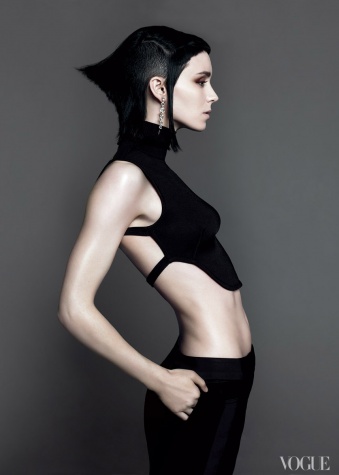
What makes a great fashion image? A new book, Vogue: The Editor’s Eye, celebrates the work of Vogue’s boundary-pushing fashion editors.
Throughout its 120-year history, Vogue has been creating arresting images intended to make the reader’s eye stop. These are images that evoke desire—for something as real as a dress or a lipstick, or as intangible as a whole new body language, attitude, or paradigm. Some are images of stately, introspective calm; others make the heart leap with an adrenaline charge of energy, reflecting a century of change in fashion, society, and culture.
But who are the thoughtful provocateurs who have collaborated with Vogue’s image-makers to capture the moments you see frozen on these pages? The Editor’s Eye is a tribute to eight of these remarkable women (there have also been a handful of remarkable men) who have guided, educated, and enabled photographers and illustrators to create the visuals that have propelled fashion forward. They reveal not only the evolving history of women’s self-presentation but also the extraordinary arc of their journey from the end of the nineteenth century to the beginning of the twenty-first—the roiling ocean of emancipation, liberation, and empowerment, changes reflected in the lives of the women whose work is gathered here.
Vogue’s editors have long been instrumental in defining the faces of the era. During the tenure of the sweetly imperious Edna Woolman Chase, from 1914 until her retirement in 1952, it was the moneyed society women, generally of a certain age, who were the real leaders of fashion, and great models from Marion Morehouse to Lisa Fonssagrives were styled after their likenesses. Collaborating with Irving Penn in the late forties and fifties, Babs Simpson dressed her subject (reflecting her own impeccable personal style) and then sat down to her needlework as she quietly directed the sitting. Diana Vreeland, who came to Vogue in 1962, shook things up when she made young beauties like Baby Jane Holzer, Edie Sedgwick, and Marisa Berenson the faces of the moment, turned quirky performers like Barbra Streisand and Cher into style stars, and transformed the waifish Twiggy into an American celebrity as well as a British one.
Now the focus shifted to reflect the Youthquake era. Penelope Tree was “discovered” at Truman Capote’s 1966 Black and White Ball (written up in Vogue by Gloria Steinem) and was soon whisked to Richard Avedon’s studio, where Polly Allen Mellen emphasized her gangly limbs in a too-small pantsuit; together they created a defining image of idiosyncratic sixties beauty. A decade later, Jade Hobson turned Patti Hansen into the smiling embodiment of the golden goddess next door. Carlyne Cerf de Dudzeele was front and center in creating the supreme moment of the supermodel in the late eighties and nineties, working with Patrick Demarchelier, Steven Meisel, and Peter Lindbergh on pictures that made Cindy, Naomi, Linda, Christy, et al., the most famous faces of their generation.
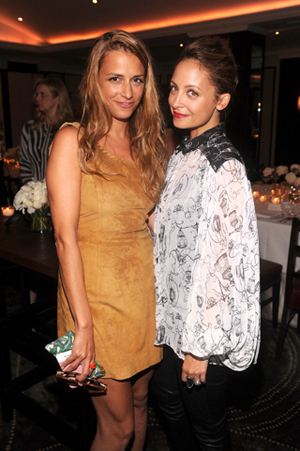
Nicole Richie has been M.I.A. in Australia for the past few months, but last night she was back in action celebrating her upcoming capsule collection for Macy’s with a candlelit dinner at Daniel, along with Eddie Borgo, husband-in-law Josh Madden, and close friend Charlotte Ronson (pictured, left). Richie (pictured, right) might have been on vacation, but she’s been working hard, to say the least. "I am constantly working on Winter Kate and House of Harlow and my fragrance comes out at the beginning of September and we are about to start shooting Fashion Star," she reported. "Yeah, this is going to be a busy fall."
Richie, once the Juicy sweat suit-wearing star of The Simple Life, recalled just how much things have changed since her formative years. "I went through a Punky Brewster stage, she was my everything," she admitted. "I would leave the house in a red shoe and black sock and a green shoe and I thought I was killing it. Those pictures are still in my mom’s house and they haunt me all the time."
Since, ahem, refining her look, the starlet-turned-designer still has one sartorial problem she can’t seem to solve: "It’s very hot during the summer and I love a long sleeve, so the two don’t go hand-in-hand right now," Richie (who was wearing a long sleeve number last night) told Style.com. "Luckily, I am never hot so it just works out for me. Literally, I never get hot." Must be nice. As for the details on her upcoming Macy’s collection, we can’t share them just yet, but stay tuned.
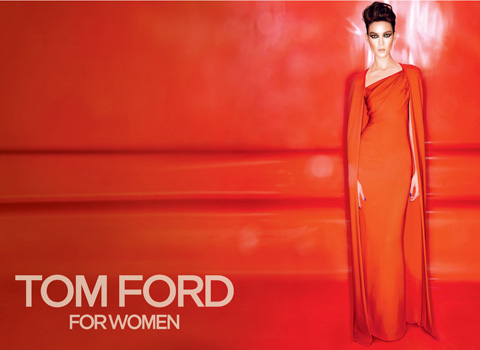
Tom Ford, designer-turned-director-turned-designer once more, has channeled the Golden Age of Hollywood in his new Fall ad campaign.
Model Kati Nescher stars, wearing a scarlet version of the white gown and cape that shot Gwyneth Paltrow to the top of this year’s Oscars best-dressed lists. cbamd.com has an exclusive first look at the campaign, which, like last season’s, was lensed by Ford himself.
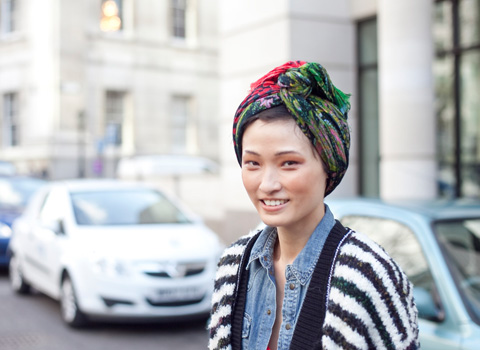
Any way you wind it, turbans have been making fashion statements since Paul Poiret began topping off his creations with them way back in the early twentieth century (though Sikhs, of course, had been wearing them for centuries before that).
Recall 1940’s film noir costumes à la Joan Crawford, the glory days of Yves Saint Laurent, Prada’s Spring 2007 show, and even Sex and the City 2. This summer, they’re making yet another return. On the street, It girls like Vika Gazinskaya and Margherita Missoni have adopted the look, and at his haute couture show last week, Jean Paul Gaultier took a bow in a turban similar to those he showed in his Resort collection. But perhaps credit for the current trend ultimately goes, as it so often does, to Karl Lagerfeld.
The Chanel head honcho sent Baptiste Giabiconi down his pre-fall runway in Rajasthani jewels and a “murban.”
Based on the data made by China Apparel Job Website ( www.cfw.cn), the talented persons demand double up once compared with last year because of the apparel industry recovery during the first half year.In China, some positions in apparel industry demand exceeds supply all the time. So this year it is much more difficult to recruit talented persons for those positions.
With the apparel industry recovery during the first half year, both export and national demand are increacing greatly. Especially national demand increased, it results in many apparel manufacturers turned to national market. They set up their brands to open national market.
However, the key to build their own brand is the talented person, especially fashion designers, which is considered in the first place by many manufacturers.
The hottest positions are: fashion designers, stylists, salesmen, assistant of fashion designers, samplers.
The key for the change from" China made" to 'China Creation", from " big garment manufacturing country" to " strong garment country" is talented persons. Shortage of fashion designers has hindered China apparel development.